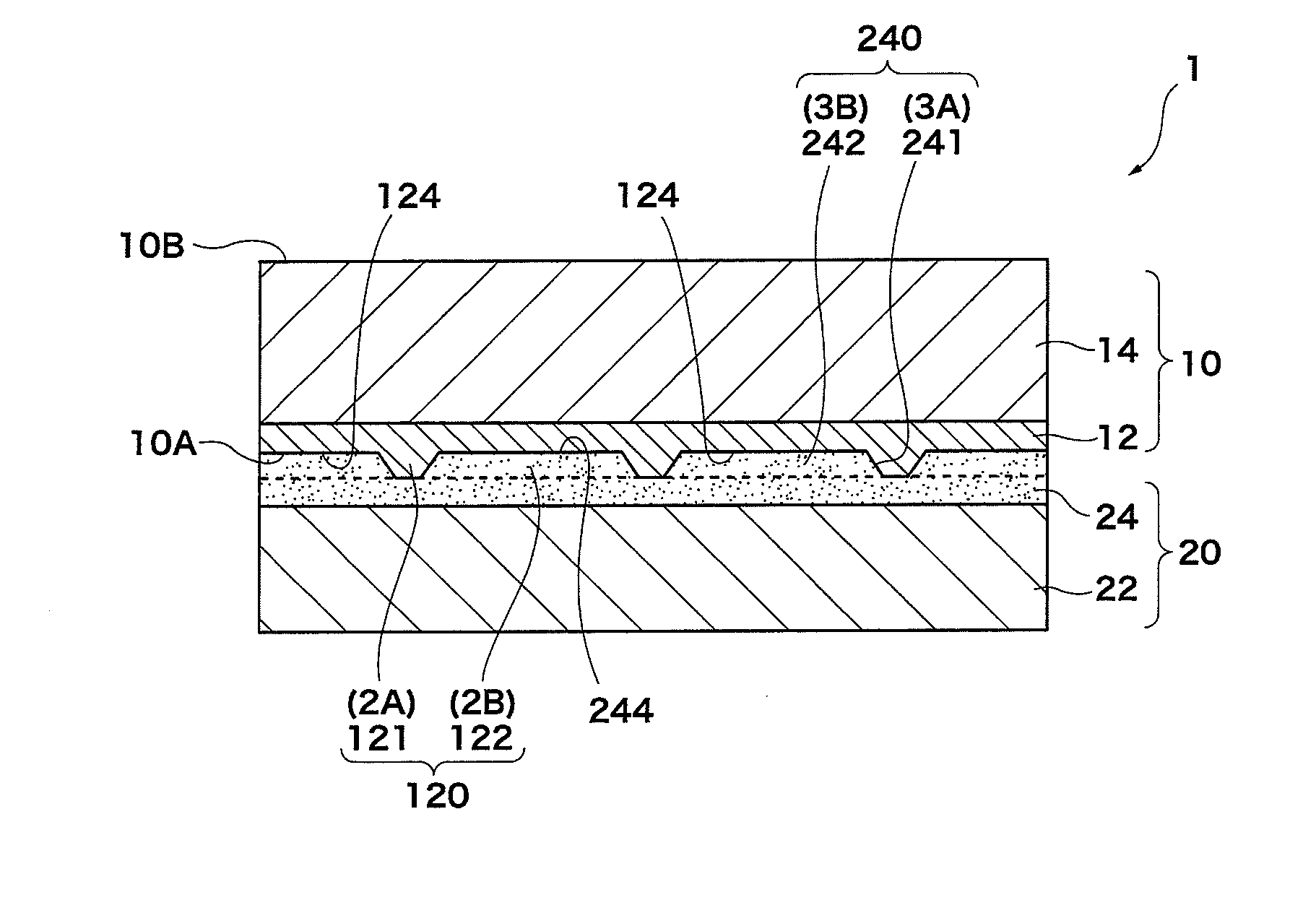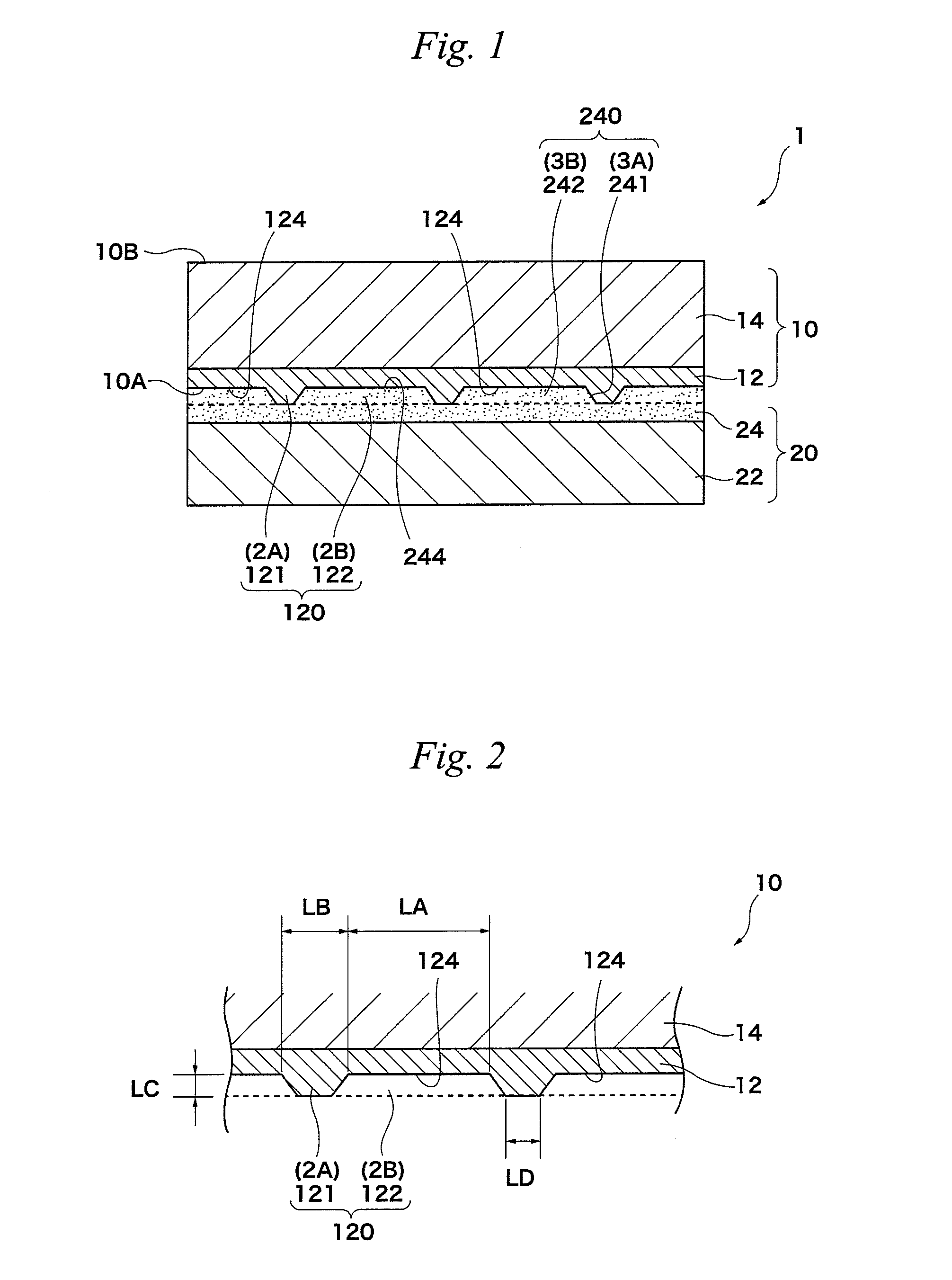Release liner-attached pressure-sensitive adhesive sheet
a technology of pressure-sensitive adhesives and adhesive sheets, which is applied in the direction of film/foil adhesives, adhesive types, transportation and packaging, etc., can solve the problems of lowering the pressure-sensitive adhesive performance of the pressure-sensitive adhesive sheet, and the application of the substrate by coating or casting becomes very difficult to achieve, so as to avoid inhibition of polymerization and reduce oxygen concentration
- Summary
- Abstract
- Description
- Claims
- Application Information
AI Technical Summary
Benefits of technology
Problems solved by technology
Method used
Image
Examples
example 1
[Preparation of Application Liquid for Composite Film]
[0137]A reaction container equipped with a condenser, a thermometer and a stirring device was charged with 5 parts of acrylic acid (AA), 35.5 parts of isobornyl acrylate (IBXA) and n-butyl acrylate (BA) as the acrylic monomers and 36.4 parts of polyoxy tetramethylene glycol (PTMG) (number average molecular weight 650, mfd. by Mitsubishi Chemical Corporation) as a polyol, and while stirring, 13.6 parts of hydrogenated xylylene diisocyanate (HXDI) was added dropwise thereto and allowed to undergo the reaction at 65° C. for 1 hour, thereby obtaining a urethane polymer-acrylic monomer mixture.
[0138]Thereafter, a mixture of urethane polymer and acrylic monomers (application liquid for composite film) was obtained by 3 parts of trimethylolpropane triacrylate as a crosslinking agent and further adding 0.15 part of bis(2,4,6-trimethylbenzoyl)-phenylphosphine oxide (“IRGACURE 819” mfd. by Ciba Japan) as a photo-polymerization initiator, 1...
examples 2 to 6
[0149]The release liners of Examples 2 to 6 were obtained in the same manner as in Example 1, except that a grid-like convex part having mutually intersecting first ridge group and second ridge group with the pitch and sectional shape shown in Table 1 was formed on the surface of respective release liners by carrying out the above-mentioned press processing using an emboss die having a shape different from Example 1. The release liner-attached pressure-sensitive adhesive sheets of Examples 2 to 6 were prepared in the same manner as in Example 1, except that said the above-mentioned release liners were used.
examples 7 to 12
[Preparation of Release Liner]
[0150]A PP layer was formed by extrusion laminating a homopolypropylene (homoPP) on both sides of a PET film (mfd. by Toray Industries, Inc., trade name “Lumirror S-28”). As the homoPP, a product of Japan Polypropylene Corporation, trade name “NOVATEC FL03H” (a homoPP which does not contain a phosphorus antioxidant, to be referred sometimes to as “PP-0” hereinafter), was used. By this, a sheet of three layer structure having PP layers on both sides of the PET film (support layer) was prepared. Total thickness of this laminated sheet was 160 μm and among this, thickness of the support layer was 100 μm and thickness of each PP layer was 30 μm.
[0151]Next, a release treatment was carried out on one surface of the PP layer (surface to be treated). Illustratively, a commercially available addition-curable silicone release agent (a platinum catalyst is used, a solvent type) was applied to the above-mentioned surface to be treated in such a manner that the appl...
PUM
| Property | Measurement | Unit |
|---|---|---|
| light transmittance | aaaaa | aaaaa |
| diameter | aaaaa | aaaaa |
| distance | aaaaa | aaaaa |
Abstract
Description
Claims
Application Information
 Login to View More
Login to View More - R&D
- Intellectual Property
- Life Sciences
- Materials
- Tech Scout
- Unparalleled Data Quality
- Higher Quality Content
- 60% Fewer Hallucinations
Browse by: Latest US Patents, China's latest patents, Technical Efficacy Thesaurus, Application Domain, Technology Topic, Popular Technical Reports.
© 2025 PatSnap. All rights reserved.Legal|Privacy policy|Modern Slavery Act Transparency Statement|Sitemap|About US| Contact US: help@patsnap.com



